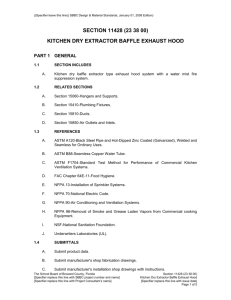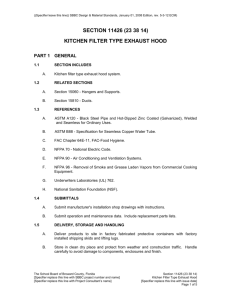Safety in Design and Technology
advertisement
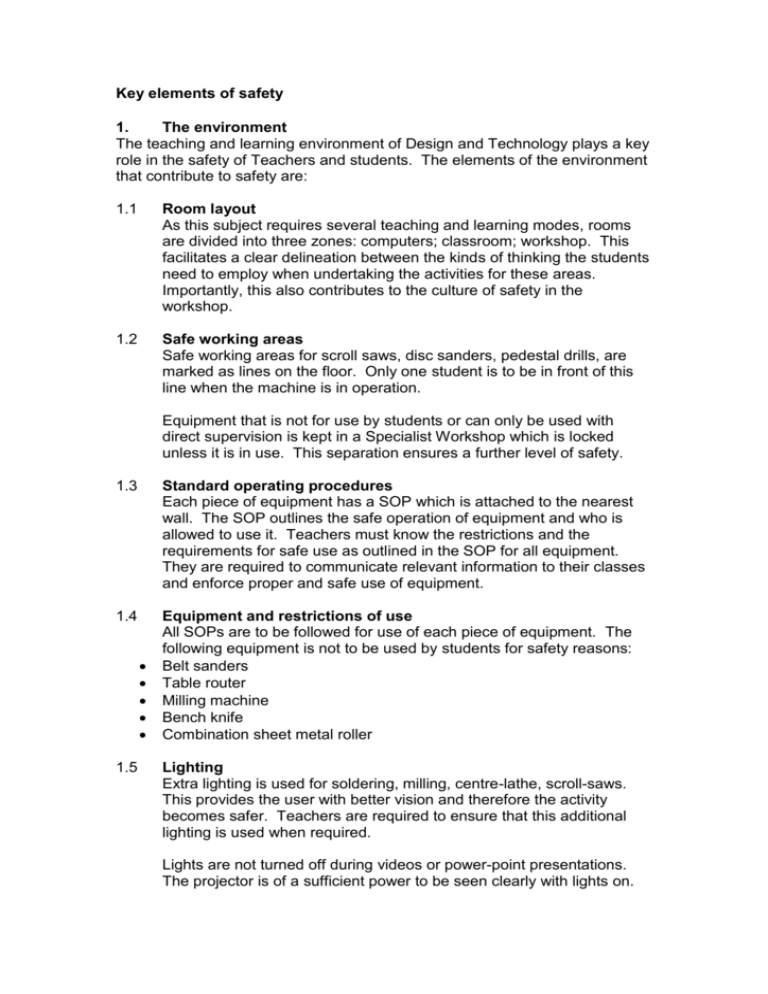
Key elements of safety 1. The environment The teaching and learning environment of Design and Technology plays a key role in the safety of Teachers and students. The elements of the environment that contribute to safety are: 1.1 Room layout As this subject requires several teaching and learning modes, rooms are divided into three zones: computers; classroom; workshop. This facilitates a clear delineation between the kinds of thinking the students need to employ when undertaking the activities for these areas. Importantly, this also contributes to the culture of safety in the workshop. 1.2 Safe working areas Safe working areas for scroll saws, disc sanders, pedestal drills, are marked as lines on the floor. Only one student is to be in front of this line when the machine is in operation. Equipment that is not for use by students or can only be used with direct supervision is kept in a Specialist Workshop which is locked unless it is in use. This separation ensures a further level of safety. 1.3 Standard operating procedures Each piece of equipment has a SOP which is attached to the nearest wall. The SOP outlines the safe operation of equipment and who is allowed to use it. Teachers must know the restrictions and the requirements for safe use as outlined in the SOP for all equipment. They are required to communicate relevant information to their classes and enforce proper and safe use of equipment. 1.4 Equipment and restrictions of use All SOPs are to be followed for use of each piece of equipment. The following equipment is not to be used by students for safety reasons: Belt sanders Table router Milling machine Bench knife Combination sheet metal roller 1.5 Lighting Extra lighting is used for soldering, milling, centre-lathe, scroll-saws. This provides the user with better vision and therefore the activity becomes safer. Teachers are required to ensure that this additional lighting is used when required. Lights are not turned off during videos or power-point presentations. The projector is of a sufficient power to be seen clearly with lights on. 1.6 Electrical and pneumatic Electrical isolation switches turn off all electrical outlets and are used by Teachers in the event of an emergency. Air tools are generally used in preference to electric tools. Air tools are lighter and smaller and are therefore easier to control for younger students. 1.6 Signage Equipment and workspaces that have particular safety requirements have extra signage. This is typically for electrical hazard, eye and ear protection and laser hazard. 1.7 Storage An effective and neat storage system for students’ project work and tools is important in creating an orderly workspace. This orderliness contributes to the culture of safety in the workshops. 1.8 Air quality Various activities in Design and Technology create dust or fumes. Maintaining air quality during these activities is an important safety consideration. Various options are available in maintaining air quality. These are: room exhaust; dust extractor; fans; opening doors and windows; fume hood. The following table outlines the various activities that may compromise air quality and the action taken to minimise or remove this hazard. Disc sanding Hand filing Hot-wire cutter Strip heater Gluing (except PVA) Band Saw Panel Saw Laser engraving Orbital sanding Soldering 1.9 Noise Extractor to be turned on and engaged; room exhaust on. Windows and door to be open, and fans may be on; room exhaust on. Activity to be undertaken under fume hood and fume hood to be turned on. ; room exhaust on. Windows and door to be open, and fans may be on; room exhaust on. Activity to be undertaken under fume hood and fume hood to be turned on. ; room exhaust on. Extractor to be turned on and engaged; room exhaust on. Extractor to be turned on and engaged; room exhaust on. Filtration system turned on; room exhaust on. User to wear mask, windows and door to be open, and fans may be on; room exhaust on. Activity to be undertaken under fume hood and fume hood to be turned on; room exhaust on. Some equipment in Design and Technology can cause hearing damage if exposure is excessive. The limit for hearing damage is a sustained level of 85dB. (www.betterhealth.vic.gov.au/bhcv2/bhcarticles.nsf/pages/Workplace_s afety_noise_pollution) The operator of any equipment that produces a noise level of over 85dB requires hearing protection. This equipment is: Equipment Band saw Table saw Air hose Radial arm saw Disc sander Sand blaster Orbital sander Finger jointer Biscuit jointer Air Drill Mini Drill (on Al.) Bench Grinder Scroll saw (on Al.) Power Drill Vacuum Cleaner Noise level 108dB 101dB 98dB 104dB 94dB 98dB 92dB 97dB 93dB 92dB 97dB 96dB 98dB 93dB 87dB These levels were measured at the distance of the operator and included background workshop noise as would be expected under normal operating conditions. Recorded levels showed that nonoperators at a viewing distance were not at risk with the exceptions of the Band saw, Table saw, Radial arm saw, Sand blaster, and finger jointer. In these cases students and Teachers within 1m of the activity also require ear protection. To protect against exposure to noise over 85dB students and Teachers are required to wear either ear plugs or ear muffs. They are to know the location of this safety equipment. Teachers are to explain noise hazards to students and to enforce the required safety measures. 1.10 Trip hazards Teachers are to be aware of trip hazards in the workshop and classroom areas. Trip hazards are minimised by the following measures: Students are not to bring bags into the classrooms; Consideration is given to the layout of the tables and workbenches to allow for best access to tools and equipment; Teachers ensure that rubbish is removed from the floor throughout any lesson; Pendant power-points and air outlets are provided to the work benches so that no cords are at ground level; 2. Teaching methods 2.1 Personal safety of Teachers Teachers are required to adhere to safety standards outlined on the Standard operating Procedures for equipment. Teachers are to wear leather upper shoes at all times and an apron when using tools and equipment. 2.2 Standards and information sheet Each student is given a standards and information sheet in their first lesson. This details the general safety requirements for students in the Design and Technology studios. Teachers are to explain these requirements in detail. 2.3 Demonstrations. Teachers physically demonstrate the safe and proper use of all equipment that is relevant to each project. The risks of each activity are explained as well as the methods used to minimise risk. Students are required to record the safety considerations for each of the tools and equipment. Teachers should also revise safety procedures at the beginning of each lesson before students commence work on equipment. 2.4 Safe usage records Teachers directly supervise students using equipment for the first time. Intervention is taken as necessary. A record is made once the student is deemed competent and able use the equipment safely. 2.5 Supervision. Classroom supervision during practical lessons is to be active and vigilant. Teachers are to intervene whenever they perceive a potentially unsafe situation. It is not possible to employ direct supervision for every student for every piece of equipment, but Teachers should provide general supervision once a student has been deemed competent on a piece of equipment. When a Teacher is giving a student individual help they are also responsible for the general supervision of the whole class and must intervene whenever they see an unsafe activity, or the development of a poor tone that could lead to unsafe activities. 2.6 Cleaning and pack-up. Teachers are required to ensure neatness of learning environments. This includes: ensuring tables are neatly aligned; all students’ work is packed away at the end of every lesson; all tools are packed away in correct locations. At the end of the last lesson of the day for each room chairs are to be placed on tables, windows closed, fans turned off, extractor, compressor, hood exhaust and room exhaust turned off, and the room is locked. Students are to wash their hands after every practical lesson. 2.6 Class tests and exams. Students are tested on safety in class tests and in exams. 3. Teacher skills 3.1 OH&S documents Teachers are required to read the School OH&S documents and sign that they have read and understood them. 3.2 Technical training Teachers are required to show competency on the safe use of tools and equipment. Those without an external accreditation are to show competency to the Head of Design and Technology. This will involve the HOD demonstrating the safe and proper use of equipment outlining classroom issues; and observation of classroom supervision. 3.3 First aid As the workshop is identified as an area of increased risk each Teacher should have current first aid training.
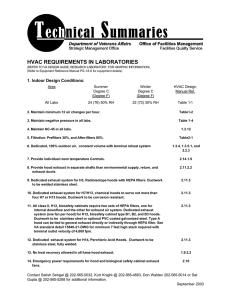
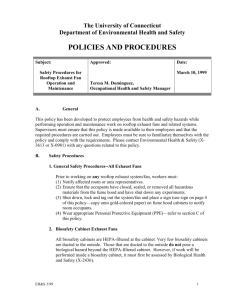

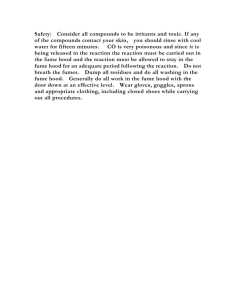
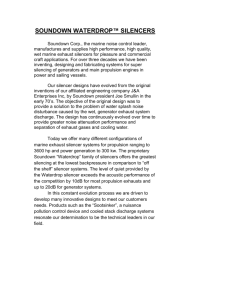
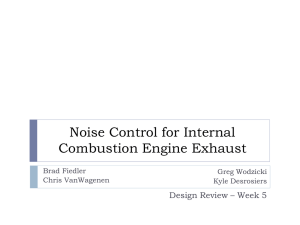
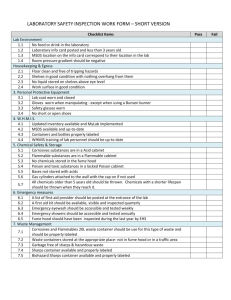
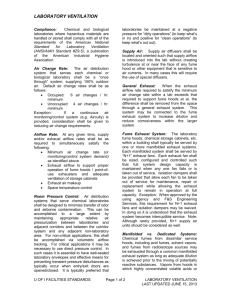
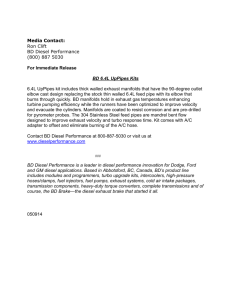
![1/2" [15mm] HANGER ROD SECURED TO STRUCTURE ABOVE (TYP) TURNBUCKLE (TYP)](http://s2.studylib.net/store/data/012123802_1-ee93488fd8de5615c0e95a96905389a0-300x300.png)
